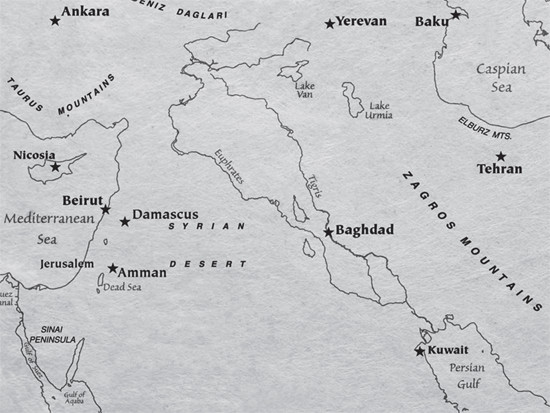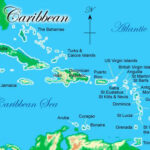The question of “Where Was Eden?” has intrigued theologians, historians, and curious minds for centuries. Many assume the biblical Garden of Eden, described as paradise on Earth, was situated in the Middle East, near the Tigris and Euphrates Rivers. This assumption stems from the geographical details provided in the Book of Genesis. But does the biblical text definitively place Eden in this region, and is it geographically and theologically sound?
The Genesis Description of Eden’s Rivers
The Bible offers clues about Eden’s location in Genesis 2:8–14. This passage describes God planting a garden “eastward in Eden” and details a unique river system:
The Lord God planted a garden eastward in Eden. . . . Now a river went out of Eden to water the garden, and from there it parted and became four riverheads. The name of the first is Pishon . . . . The name of the second river is Gihon. . . . The name of the third river is Hiddekel [Tigris]. . . . The fourth river is the Euphrates.
This description outlines a single river flowing from Eden that then divides into four distinct rivers. Notably, two of these rivers are identified as the Tigris and Euphrates, rivers we know today in the Middle East. This has led many to conclude that Eden must have been in Mesopotamia.
The Middle East Misconception and Calvin’s Doubts
Despite the mention of the Tigris and Euphrates, even prominent theologians have recognized difficulties in pinpointing Eden’s location to the modern Middle East based solely on this passage. John Calvin, a key figure in the Reformation, grappled with this very issue. In his commentary on Genesis, Calvin acknowledged the common identification of the Tigris and Euphrates but questioned the feasibility of the other two rivers fitting geographically.
Calvin observed:
Moses says that one river flowed to water the garden, which afterwards would divide itself into four heads. It is sufficiently agreed among all, that two of these heads are the Euphrates and the Tigris; for no one disputes that . . . (Hiddekel) is the Tigris. But there is a great controversy respecting the other two. Many think that Pison and Gihon are the Ganges and the Nile; the error, however, of these men is abundantly refuted by the distance of the positions of these rivers. Persons are not wanting who fly across even to the Danube; as if indeed the habitation of one man stretched itself from the most remote part of Asia to the extremity of Europe. But since many other celebrated rivers flow by the region of which we are speaking, there is greater probability in the opinion of those who believe that two of these rivers are pointed out, although their names are now obsolete. Be this as it may, the difficulty is not yet solved. For Moses divides the one river which flowed by the garden into four heads. Yet it appears, that the fountains of the Euphrates and the Tigris were far distant from each other.1
Calvin astutely recognized that the Genesis description of four rivers originating from a single source near Eden doesn’t align with the current geographical reality of the Tigris and Euphrates river systems, whose sources are quite separate.
Noah’s Flood: A Catastrophic Game Changer
Calvin himself considered a crucial factor often overlooked in discussions about Eden’s location: the global Flood of Noah’s time. He suggested that the Earth’s surface may have been drastically altered by this cataclysmic event. This is a pivotal point when considering “where was Eden?”.
The biblical account of Noah’s Flood describes a worldwide catastrophe that would have reshaped the planet’s geography. Creation scientists believe that the vast layers of sedimentary rock found across the Earth, often containing fossils, are largely a result of this global Flood. If this is the case, the pre-Flood world, including the original location of Eden, would be buried and dramatically changed.
 Map of Tigris and Euphrates Rivers
Map of Tigris and Euphrates Rivers
This map illustrates the region of the Tigris and Euphrates rivers, often mistakenly associated with the location of the Garden of Eden.
Why the Middle East Doesn’t Fit
The implications of the Flood are profound when considering the location of Eden. The region where the modern Tigris and Euphrates rivers flow is underlain by hundreds of feet of sedimentary strata, much of which is fossiliferous. These fossil-bearing layers are understood by creationists to have been deposited during Noah’s Flood.
Logically, the Garden of Eden, a perfect paradise created before sin and death entered the world, could not be situated on top of layers of rock containing billions of dead creatures – fossils – which are evidence of death. To place Eden in the modern Middle East is to ignore the catastrophic impact of the Flood and, problematically, to suggest death existed before the Fall of Man and the introduction of sin into creation.
Naming Rivers After the Flood: A Historical Parallel
If the Garden of Eden wasn’t in the present-day Middle East, then why are there rivers named Tigris and Euphrates in that region today? The answer may lie in post-Flood repopulation and the human tendency to reuse familiar names when establishing new settlements.
Consider historical parallels. Australia, for example, features many place names that are also found in England, like Newcastle. This is because early settlers from England named new locations in Australia after familiar places back home. Similarly, the United States has rivers named Thames, Severn, and Trent, mirroring prominent rivers in the United Kingdom.
It is plausible that Noah and his family, after disembarking from the Ark in the mountains of Ararat (in the Middle East region), used names from the pre-Flood world, including Tigris and Euphrates, to name rivers and locations in their new post-Flood world. These names were familiar to them and served as a connection to the world that was lost.
The True Location of Eden: Lost to Time
Ultimately, based on the biblical description, geographical considerations in light of the Flood, and theological consistency, we must conclude that we do not know the precise location of the Garden of Eden. The Flood, a world-altering event, obliterated the pre-Flood geography, making it impossible to pinpoint Eden’s original site based on present-day landmarks.
Insisting that Eden was located in the area of the modern Tigris and Euphrates rivers not only disregards the overwhelming evidence of Noah’s Flood but also introduces theological inconsistencies regarding death before sin. The quest to pinpoint “where was Eden?” may be a fascinating one, but the Bible and the geological record suggest its location is now lost to the cataclysmic events of the past.
References
[1] John Calvin, Commentary on Genesis, vol. 1, Genesis 2:10–14.
[2] John Calvin, Commentary on Genesis, vol. 1, Genesis 2:10–14.


